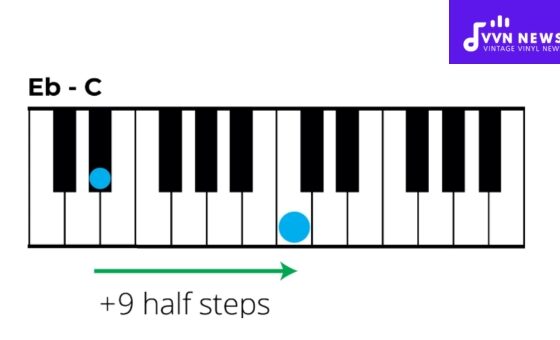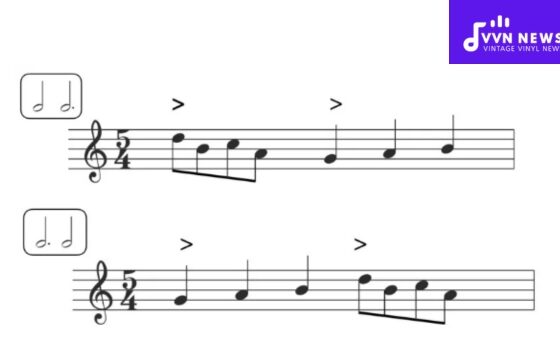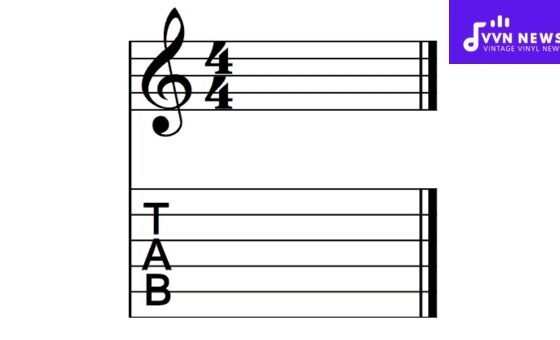Are you a flute player struggling with your low notes? Do you find it difficult to produce a clear and resonant sound in the lower register of your instrument?
Well, I will be sharing 12 tips that can help you improve your low notes on the flute.
By implementing these strategies, you’ll soon be able to play those rich and beautiful low tones with ease and confidence. So, let’s get started with these 12 Tips To Improve Your Low Notes On The Flute.
Mastering the low notes on the flute can be quite challenging for many musicians. These pitches require a different approach compared to the higher register.
Producing a warm, full-bodied sound in the lower range requires proper technique and control.
That’s where these 12 tips come into play! They will provide you with practical guidance on how to enhance not just your tone quality but also your overall fluency in playing low notes on the flute.
So whether you’re a beginner or an experienced player looking for some extra guidance, these tips are sure to benefit you in your musical journey.
So, without further ado, let’s dive into the techniques that will help you conquer those challenging low notes on the flute.
12 Tips To Improve Your Low Notes On The Flute

Are you struggling to produce clear and resonant low notes on the flute? Don’t worry, you’re not alone!
Many flute players face challenges when it comes to playing in the lower register of their instrument.
With some practice and a few helpful tips, you can improve your low notes and achieve that warm and rich tone you desire.
Here are 12 valuable tips to help you enhance your low notes on the flute.
Practice scales and arpeggios in the lower register.
One of the most effective ways to improve your low notes on the flute is to practice scales and arpeggios specifically in the lower register.
Start by focusing on keys that require you to play those low notes frequently, such as C, F, and Bb major.
This will help you become more comfortable with the fingerings and develop muscle memory for producing those tones.
Take your time when practicing these scales and arpeggios. Begin slowly and gradually increase your speed as you become more confident.
Pay close attention to intonation and strive for accuracy in each note. By dedicating regular practice time to scales and arpeggios in the lower register, you’ll build a solid foundation for playing low notes with precision and ease.
Also Read: D Music Notes And Keys [Unraveling The Basics Of Guitar]
Experiment with different flute head joints.
The head joint of your flute plays a crucial role in determining tone quality, especially in the lower register.
Consider experimenting with different head joints to find one that enhances your low notes’ clarity and richness. Some headjoints may produce a brighter sound while others may create a darker tone.
Consult with a professional flute technician or try out different head joints from fellow flutists or music stores.
Spend some time playing your flute with each head joint option to discern which one best suits your preferences and style of playing.
The right head joint can make a significant difference in improving your low notes’ projection and resonance.
Study from a skilled flute teacher.
Working with a skilled flute teacher is invaluable when it comes to improving any aspect of your flute playing, including low notes.
A qualified teacher can provide personalized guidance tailored to your specific needs, helping you overcome any technical challenges you may face.
During lessons, your teacher can offer expert advice on hand position, embouchure formation, air support techniques, and breathing exercises specific to playing low notes on the flute.
They will also be able to identify any technical issues you may have and provide targeted exercises to address them.
Regular lessons with a skilled flute teacher can significantly expedite your progress in mastering low notes and overall flute playing abilities.
Listen to professional flutists for inspiration.
One of the best ways to improve any aspect of your playing is to listen to professional flutists for inspiration.
In particular, please pay close attention to how they approach and execute low notes on the instrument.
Listening to their recordings can give you a clearer idea of how it should sound and what tone quality you should strive for.
Take note of their embouchure, air support, and finger technique as you listen. By immersing yourself in the music of accomplished flutists, you will develop a better musical ear and a stronger understanding of the nuances required for producing beautiful low notes on the flute.
Also Read: 12 Tips To Improve Your Low Notes On The Flute [Easy Strategies To Learn]
Be patient and persistent in your practice.
Improving your low notes on the flute takes time and effort, so it’s essential to be patient throughout your practice sessions.
Understand that progress may not happen overnight, but with consistent practice, you will gradually see improvement.
Be persistent in your efforts and remain dedicated even during moments of frustration. Pace yourself during practice sessions by setting attainable goals that challenge you without overwhelming you.
Celebrate small victories along the way, as even slight improvements are significant milestones in your musical growth.
Focus on proper posture and breath support.
Proper posture and breath support are essential in producing clear, resonant low notes on the flute. Ensure that your body is aligned correctly when playing – sit or stand upright with relaxed shoulders, an engaged core, and a straight back.
When it comes to breath support, imagine filling up your abdomen like a balloon as you take deep breaths.
Avoid shallow breathing as it may limit airflow and hinder your ability to produce strong low notes. Focus on controlled exhalation while engaging your diaphragm to sustain the air stream consistently.
Incorporate breathing exercises into your practice routine, such as long tones or slow scales, to develop greater control over your breath support and enhance your low-note production.
Practice scales and arpeggios in the lower register.
Mastering scales and arpeggios is crucial for any flutist, and this holds true even more so when it comes to the lower register.
Practicing scales and arpeggios in the lower range will help you become more familiar with the fingerings, improve your intonation, and develop muscle memory for playing in this region.
Start by choosing a comfortable key, such as a C major or a G major, to practice your scales. Begin by playing these scales slowly and evenly, focusing on achieving a clear and resonant tone on each note.
As you become more comfortable, gradually increase the tempo while maintaining steadiness and accuracy. Remember to pay attention to your fingerings and use proper technique throughout.
In addition to scales, practicing arpeggios can also be beneficial. This exercise involves playing the individual notes of a chord in sequential order.
Start with simple arpeggios, like those found in the key of C major or G major, before moving on to more complex ones.
This will help you strengthen your finger dexterity and coordination specifically in the lower register.
Also Read: Music Notes [A Complete Guide For Beginners And Up]
Practice long tones regularly.
Long tones are an essential part of flute practice as they help build strength and endurance in your embouchure muscles while improving tone quality.
When focusing on low notes, long tones become even more important as they allow you to explore different dynamics and work on sustaining a steady sound.
To practice long tones in the lower register, start by choosing a comfortable pitch within that range. Begin by playing the note softly with a full-breath support system.
Gradually increase the volume without sacrificing tone quality or control. Aim for consistency in your sound throughout each long-tone exercise.
Experiment with different embouchure techniques.
Your embouchure plays a vital role in producing clear and resonant low notes on the flute. Experimentation with different embouchure techniques can help you find the ideal position for achieving a robust and focused sound.
Start by focusing on creating a relaxed and open embouchure. Remember to keep your lower lip flat and cushioned against the plate, while slightly rolling outwards.
The top lip should be gently curved to form a small aperture for the air to pass through.
As you practice, try different lip positions and angles to determine which produces the best sound for you. Seek feedback from your teacher or fellow flutists to ensure you are on the right track.
Develop finger dexterity and control.
Playing low notes requires precise finger control and coordination. To improve in this area, practice exercises that target finger dexterity specifically in the lower register.
One effective exercise is playing chromatic scales using only your left hand. This will challenge your fingers to move quickly and accurately, building strength and coordination specific to the lower register. Gradually increase the tempo as you become more comfortable with this exercise.
Practicing passages or melodies that contain repetitive patterns in the lower range can also be beneficial for developing finger dexterity. Start slowly and gradually increase speed while maintaining the accuracy and clarity of each note.
Also Read: Enharmonic Equivalent Notes And Scales [Master Music Theory]
Work on your airspeed and direction.
Controlling your airspeed and direction is crucial when playing low notes on the flute. In order to achieve a rich tone, it’s important to focus on directing your air downwards towards the embouchure hole while maintaining a steady flow of air.
One exercise that can help develop this skill is playing long tones using dynamics that alternate between soft and loud. Begin by playing as softly as possible while still maintaining a clear tone.
Then gradually increase the volume to play as loudly as possible without causing any tension or strain in your playing technique.
This exercise will help you become more aware of how changes in airspeed affect your sound production.
Use a metronome to improve your timing.
Timing is crucial in music, and using a metronome can greatly improve your sense of rhythm and timing accuracy.
When practicing low notes on the flute, it’s important to maintain a steady pulse and play with precise timing.
Start by setting the metronome to a comfortable tempo and practice playing your scales or exercises in time with the clicks.
Pay attention to any hesitations or irregularities in your timing and work towards smoothing them out.
Gradually increase the tempo as you become more comfortable, always striving for accuracy and consistency.
Learn to control your tongue placement.
Controlling tongue placement is essential for achieving clear articulation and clean attacks on low notes.
Experiment with different tongue positions to find what works best for you in producing a clean and resonant sound.
Focus on using a light and relaxed tongue position that allows for quick movement while maintaining clarity.
Practice articulating single notes or short phrases in the lower register, ensuring that each note starts with a clean attack and ends cleanly.
Remember to always approach these exercises with patience and persistence.
Improvement takes time, but by incorporating these tips into your practice routine, you will gradually see progress in your ability to produce clear and beautiful low notes on the flute.
Also Read: Transposition For Trumpet [Mastering Music Notes Made Easy]
FAQs about Improving Low Notes on the Flute
How can practicing scales and arpeggios in the lower register help improve my low notes?
Practicing scales and arpeggios in the lower register helps build familiarity with the finger patterns and strengthens your muscle memory, making it easier to navigate through these notes with precision.
Why is studying from a skilled flute teacher important for improving low notes?
A skilled flute teacher can provide personalized guidance and correct any technical issues specific to your playing, helping you develop proper embouchure, breath control, and overall technique necessary for producing clear low notes.
What role does posture play in improving low notes on the flute?
Maintaining a relaxed and upright posture while playing ensures proper diaphragmatic breathing and optimal air support, which directly affects the quality of sound produced in the lower register.
Can experimenting with different embouchure techniques really make a difference?
Yes! Adjusting your embouchure by slightly changing lip shape or position can greatly affect pitch accuracy and tone color in the lower register. Experimenting with different techniques helps find the optimal setup for your unique anatomy.
How does air speed and direction impact the quality of low notes on the flute?
Controlling airspeed by using faster airflow assists in producing fuller, richer tones in the lower range. Additionally, directing your airstream downwards and aiming towards the lower lip plate helps achieve resonance and projection in these lower pitches.
Conclusion
Mastering the low notes on the flute requires dedication and practice. By implementing these 12 tips, such as practicing scales and arpeggios in the lower register, experimenting with different flute head joints, and studying from a skilled flute teacher, you can improve your low notes.
Remember to focus on proper posture and breath support, develop finger dexterity and control, and work on your airspeed and direction.
With patience and persistence, you will soon be able to produce clear and resonant low tones on the flute.








